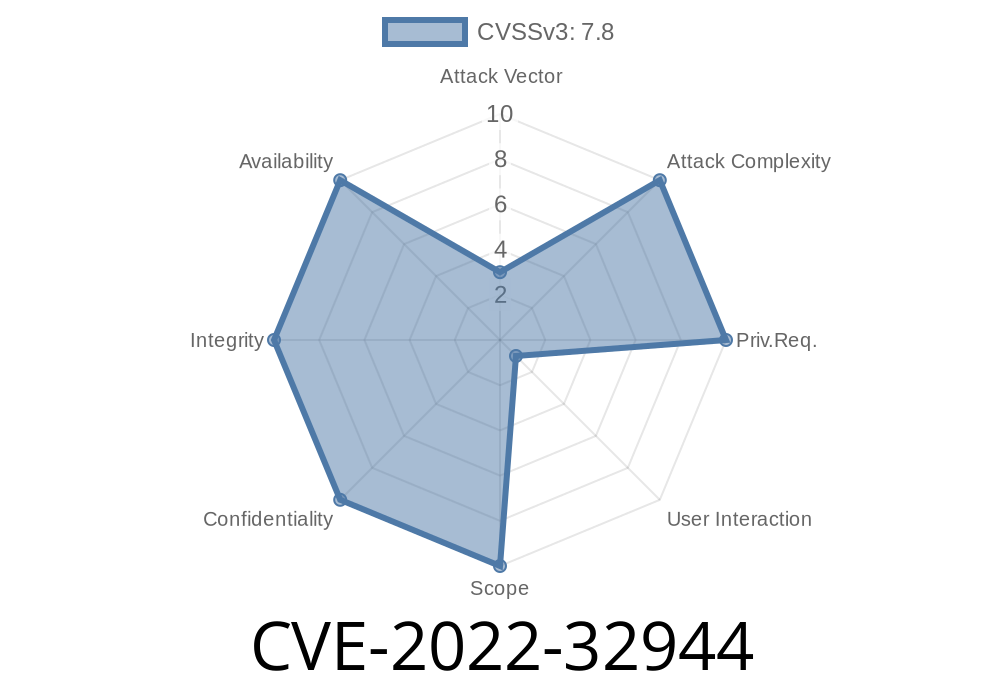There has been a critical memory corruption vulnerability recently discovered and reported publicly on numerous Apple devices. With improvements to state management, the issue has now been addressed and fixed.
The Common Vulnerabilities and Exposures (CVE) identifier for this issue is CVE-2022-32944. It is essential to take note of this to understand how the vulnerability affects different Apple operating systems and software versions. In this long-read post, we will provide detailed information about the vulnerability, share a code snippet illustrating the issue, and discuss the exploit details.
Original References
1. CVE-2022-32944 - Apple Security Advisory
2. Memory Corruption Issue - NVD Data
Code Snippet
With memory corruption vulnerabilities, an attacker has the potential to use an object after it has been freed, potentially altering the memory contents. Here is a sample code snippet that can lead to such a vulnerability:
#include <iostream>
#include <cstdlib>
#include <cstring>
int main() {
char *ptr = (char *)malloc(20);
if (ptr == nullptr) {
std::cerr << "Memory allocation failed" << std::endl;
return 1;
}
strcpy(ptr, "Memory corruption");
std::cout << "ptr: " << ptr << std::endl;
free(ptr);
// Use-after-free vulnerability
strcpy(ptr, "Vulnerability");
std::cout << "ptr: " << ptr << std::endl;
return ;
}
In this specific CVE (CVE-2022-32944), an app may be able to execute arbitrary code with kernel-level privileges. The potential issue here lies in managing the memory state after it has been deallocated and freed.
Exploit Details
With this vulnerability, if a malicious app manages to trigger this memory corruption issue, it may allow an attacker to run arbitrary code with kernel privileges. This is a severe security concern, as it would enable the attacker to have complete control over the affected system.
By exploiting the memory corruption issue, an attacker could bypass system protections, read sensitive data, or manipulate the system’s behavior. With kernel-level access, attackers may also potentially bypass in-built security features and escalate their privileges, ultimately compromising system security.
How to Mitigate
To avoid potential exploitation of this vulnerability, users are recommended to update their devices to the latest software versions listed earlier. The memory corruption issue has been addressed with improved state management, and applying the security patches will help protect your Apple devices against such attacks.
Please refer to the following official Apple support pages for detailed security patch and update information:
1. tvOS
2. iOS and iPadOS
3. macOS Ventura
4. watchOS
5. macOS Monterey
6. macOS Big Sur
Conclusion
CVE-2022-32944 is a critical memory corruption vulnerability involving various Apple operating systems and software versions. Ensuring that your devices are updated to the latest releases is crucial in protecting them from potential exploitation. By addressing the issue with improved state management, Apple has provided a necessary fix to maintain the security and integrity of its users' devices.
Timeline
Published on: 11/01/2022 20:15:00 UTC
Last modified on: 01/09/2023 16:44:00 UTC
